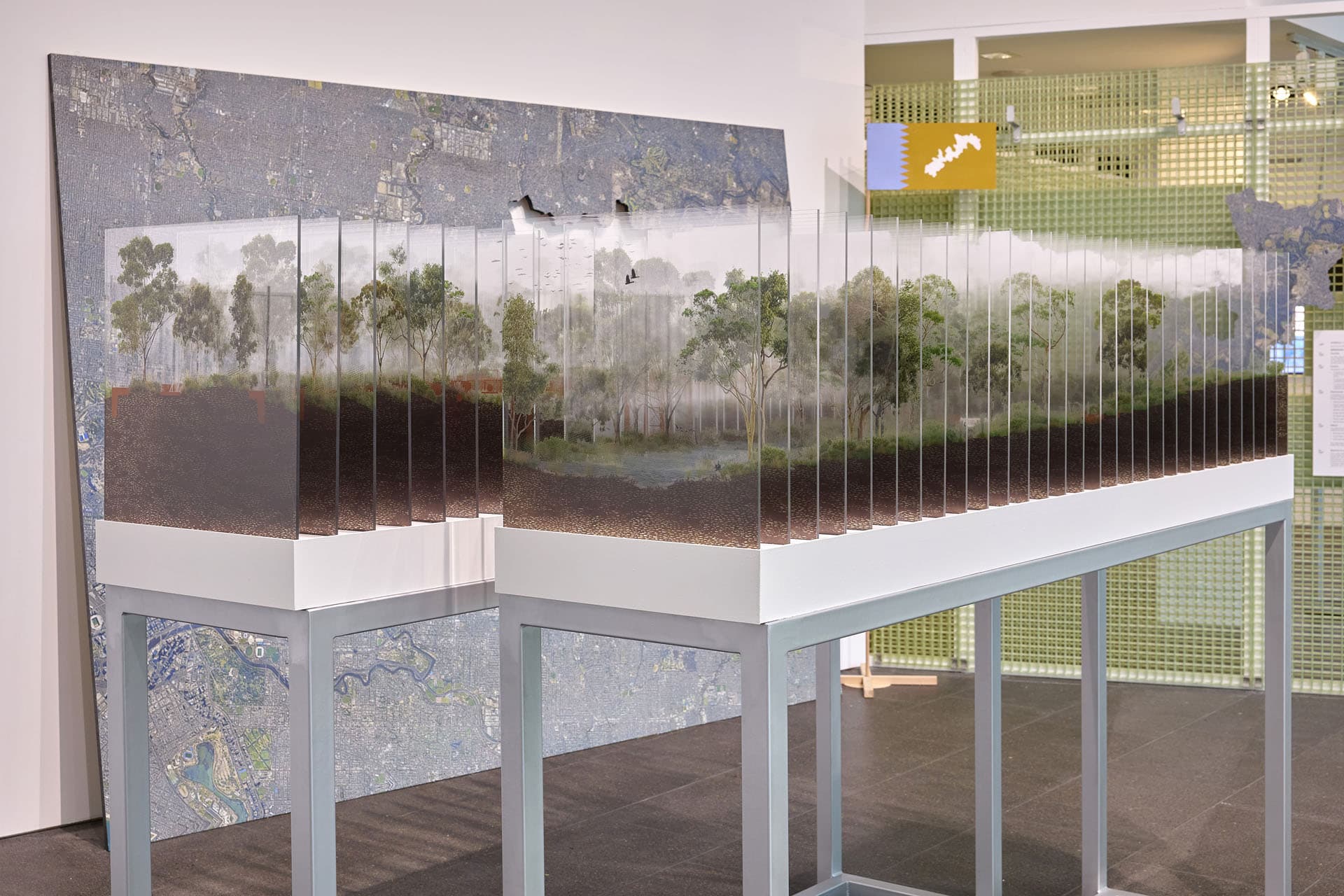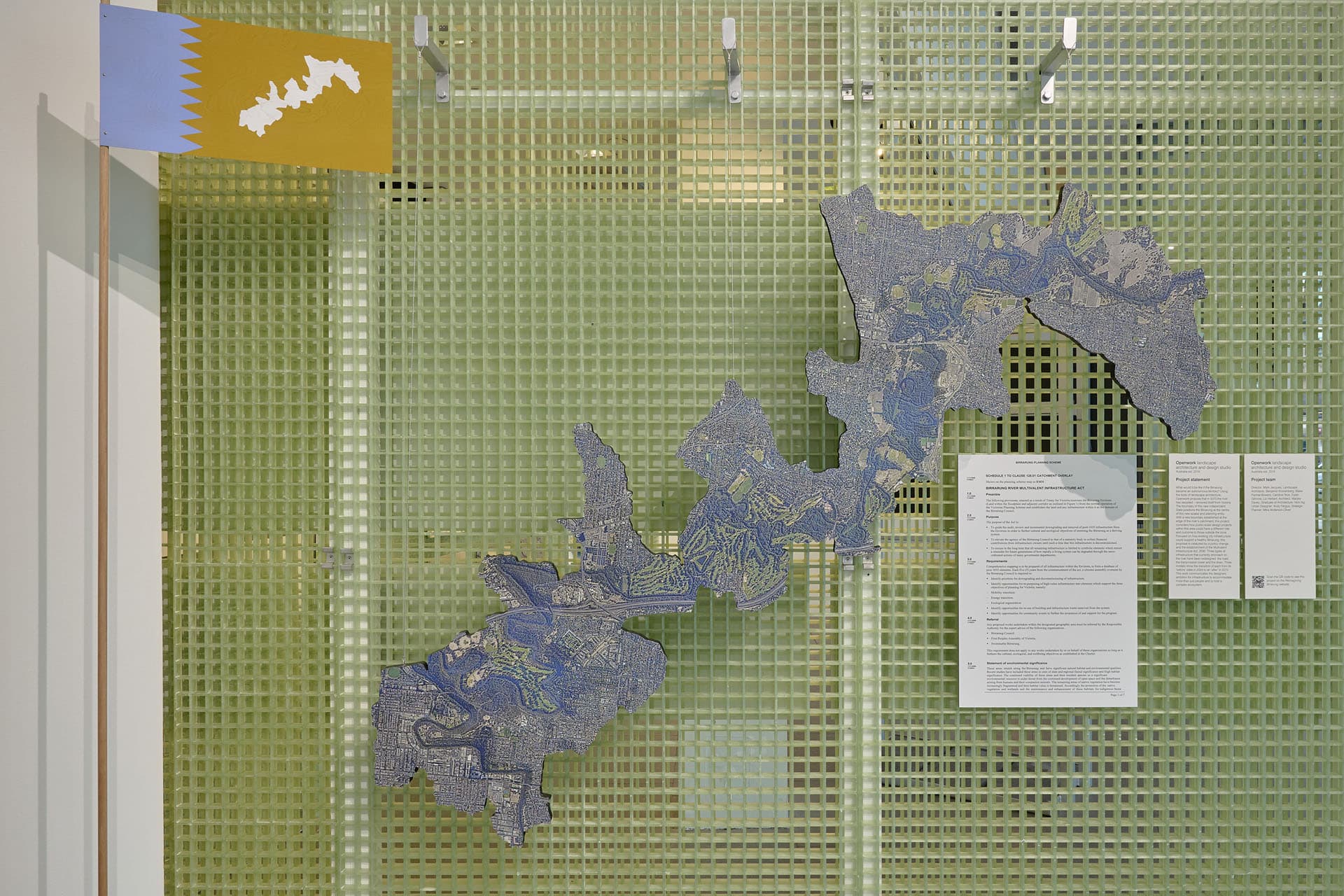HEIDELBERG / TEMPLESTOWE by Openwork
Project Statement
What would it be like if the Birrarung became an autonomous territory? Using the tools of landscape architecture, Openwork propose that in 2070 the river has seceded – removed itself from Victoria. The boundary of this new independent State positions the Birrarung at the centre of this new spatial and planning entity.
With a new boundary established at the edge of the river’s catchment, this project considers how public-scale design projects within this area could have a different role and outcome to those outside the zone. Focused on how existing city infrastructure could support a healthy Birrarung, this proposal is catalysed by a policy change and the establishment of the Multivalent Infrastructure Act, 2030. Three types of infrastructure that currently encroach on the river have been redesigned: the road, the transmission tower and the drain. Three models show the transition of each from its ‘before’ state in 2024 to an ‘after’ in 2070. This work communicates the designers’ ambition for infrastructure to accommodate more than just people and to host a complex ecosystem.
About Openwork
Openwork is a design studio that operates in four modes: a landscape architecture consultancy providing design and documentation of public places; an urban design studio providing input to plans and policies that enable future public realm; a research lab aligned with RMIT University School of Architecture and Urban Design; and a speculative design office, investing consulting profits into projects that need doing but don’t yet have external interest. Through these various modes of practice, they have cultivated an active studio who agitate change and public exchange.




